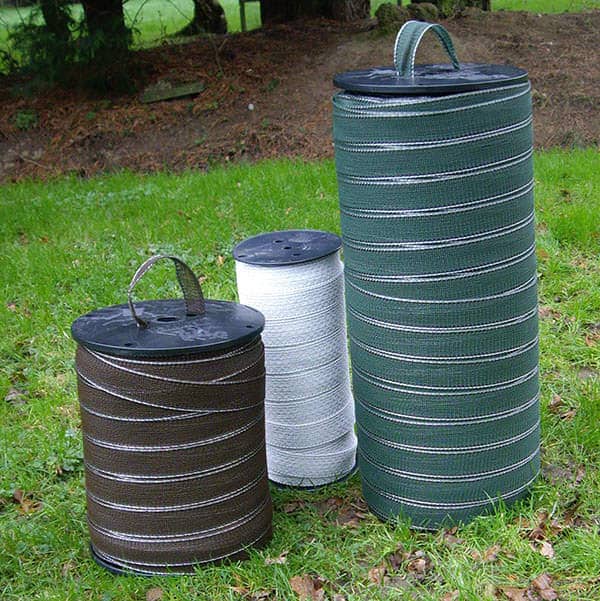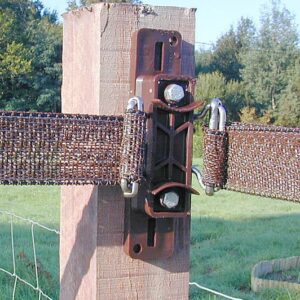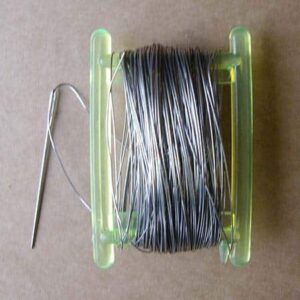Installing electric fencing tape
Installing electric fencing tape

The 40mm tape requires a support every 5m; 20mm tape requires a support every 7m. As tape is light it requires the thinnest line stakes possible. We recommend 6’ x 21/2” diameter round softwood stakes, as used for barbed wire, set 5m (5 strides) apart. At all stress points – such as gate openings, corners and the start of a tape run – more substantial stakes are required of at least 31/2” diameter to which tensioners are attached.
In very exposed conditions the supports should be every 4m and 6m, respectively. As tape is light this support can be minimal, except where the tape is stressed. Stress points are any interruption to a straight tape run, such as corners or gate openings. At these points strong wood stakes are required.
In measuring distances, as a guide one long stride is (roughly) 1 yard or 1 metre.
Wherever a strong wood stake is installed, the tape run should be terminated with a tensioner (R36V). As tensioners are double sided, the tape can also continue in its new direction from the other side of the tensioner.
Most users dispense with solid gates and use tape gates, both to affect a wide opening and to obviate the need for large fence posts.
Tape can be cut with industrial scissors (CIS0). The filaments are hard so tin snips are useful. Rejoin with either a joining buckle (R24/22) or sewing kit (R26). It should never be knotted as that makes a poor electrical contact. Only knot as an emergency temporary fixing, and then tie at least three knots.
Because the fence is active and is respected by animals, it need not be as high as traditional fences. Due to its high visibility and inherent strength, fewer strands of tape are required than for passive fencing.
At all times the tape must be well insulated from wood and vegetation so that there is no power leak.
As the fence is made of open-weave flexible nylon webbing, it will stretch when first installed or when stressed by inadvertent contact with an animal. Regular re-tensioning will be required until it is bedded in. To re-tension, loosen all insulator locks on the tape run, re-tension and re-fix the insulator locks and pull excess tape through the final tensioner. Tape should be as tight as humanly possible.
You Will Need
- Electric fence Insulators and tensioners
Electric fence tensioner – R36V
£5.50 (exc. VAT and delivery) -





